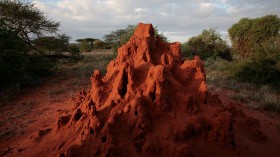22 million people were put in danger when ash clouds from Mexico's Popocatepetl volcano erupted; 11 towns have closed their schools as a precaution.
Popocatepetl Volcano
Since it awoke from a protracted hibernation in 1994, the 17,797-foot volcano, known lovingly as "El Popo," has been continuously spewing toxic fumes, ash, and chunks of incandescent rock.
The 22 million-person metropolitan area's eastern edges are much closer to the volcano, which is 45 miles southeast of Mexico City. The city is also at risk from earthquakes and sinking land, but the volcano is the most obvious and well-known threat. A powerful eruption could disrupt air travel or engulf the city in choking ash clouds.
Watching El Popo
A command center in Mexico City is surrounded by 12 seismological monitoring stations, six cameras, a thermal imaging device, and a thermal imaging device that are all operational around the clock.
The command center is staffed round-the-clock by a total of 13 scientists from a multidisciplinary team. It is crucial to be able to alert people to approaching ash clouds so they can take protective measures. In contrast to earthquakes, the warning period for a volcano may be longer, and the peak is typically more predictable.
Researcher Paulino Alonso visited the command post maintained by Mexico's National Disaster Prevention Center, or Cenapred, to examine the readings. Seismographs are used to measure the interior trembling of the volcano, which may be a sign that hot rock and gas are flowing up the vents in the volcano's peak.
Monitoring gases at the summit and in surrounding springs, as well as wind patterns that might help predict where the ash would be blown, are also important.
Cameras and sensors must constantly monitor the volcano's shape since the forces within are so strong that they could momentarily alter the peak.
Also Read: Earthshine: Earth Illuminates Moon with Ghostly Da Vinci Glow
Green, Red, Yellow
According to EMS World Online, authorities came up with the straightforward concept of a volcano "stoplight" with three colors, namely, green for safety, yellow for alarm, and red for danger. This was done to communicate this to the millions of people who were at risk.
There have been many years since the stoplight was installed, but most of those years have been stuck at some degree of "yellow." The mountain occasionally quiets down, but rarely for very long. It rarely shoots up molten lava; instead, it is more of an "explosive" variety, ejecting bursts of gas and ash as well as hot rocks that rain down its flanks.
Mexico, a nation all too familiar with natural calamities, has monitors in several states.
For instance, the command center also houses Mexico's earthquake early warning system. Mexico City, per UC Berkeley, is situated on a lake.
This means that a large earthquake on the Pacific coast hundreds of miles away may decimate the nation's capital, as it did in 1985 and 2017.
More quickly than the shock waves from the earthquake, a network of seismic monitors around the shore transmits messages. Residents of Mexico City may have up to 30 seconds after the sirens begin to sound to find the protection, usually on the streets outside, AP News reports.
Related Article: Air Quality Alert Issued for Parts of Texas as Officials Announce Ozone Action Day
© 2024 NatureWorldNews.com All rights reserved. Do not reproduce without permission.





